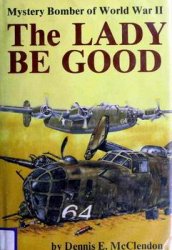Although colonial British America and the early United States were affluent societies compared to most everywhere else in the world, historians have detected an increasing level of poverty in the 18th and early 19th centuries. In the countryside, poverty evolved from the very success of European Americans: As families grew, it became more difficult for parents to provide a sufficient patrimony to maintain the same level of wealth from generation to generation. There were several solutions to the problem. A family, or some of the adult children of a family, might move to the frontier to obtain cheaper land. Life on the frontier, however, was often on the margins and poverty might well continue. Difficulty in getting a clear title to land, conflicts with Native Americans, as well as government policies all might limit this type of opportunity. Second, a family might hire out some of its children as they reached working age, hoping to provide a career that was not bound to farming. However, many of the positions open to impoverished children, such as becoming a sailor or apprenticing in a poorly paid trade like shoemaking, were not particularly lucrative. In times of war, young men sought the bounties of the recruiter hoping that it would help them to get established and buy land.
During the 18th century, greater disparities emerged between rich and poor in the cities. The most affluent resided in large brick homes with several rooms and fine furniture. The poor lived in wooden multifamily structures, often even sharing the room they rented with boarders. These distinctions emerged as a function of the increased sophistication of the economy, but they were enhanced by war and upheaval. War broke families apart, leaving women either as widows or temporarily in charge of the household. In an era when women had limited economic opportunities, this development often left a family in difficult economic straits. Because of the compact nature of urban life, poverty was more visible in the cities. Civic leaders therefore had to develop strategies for dealing with the poor.
Two forms of poor relief existed. The first, practiced in the cities and the countryside, was outdoor relief. In this system, the poor man or woman, remained in the community and received aid to supplement their income. This assistance usually came in the form of firewood or food during hard times to carry the individual or family until they could once again support themselves. The second was indoor relief—the creation of an institution to house and support the poor. Boston, New York, and Philadelphia each built large almshouses in the late colonial period. But as the costs of such institutions expanded in the mid-18th century, civic leaders decided to emphasize the corrective features of the institutions. The almshouse became not just a place for the poor to live, but also a place where the poor would work. In the process, reformers believed that poor people would learn the value of work and become self-sufficient. Moreover, the money they generated would help cut the expenses of the institution, relieving the affluent tax payer of supporting the poor. This shift in the role of the almshouse represented a change in the understanding of poverty. In the 17th century, poverty had been seen simply as the work of God. The individual was not held at fault. In the 18th century, with of the rise of the Enlightenment, people were held accountable for their actions. The poor, therefore, became capable of bettering themselves with the proper instruction. Unfortunately, the work provided in the almshouse was often menial and did not lead to the development of a skill.
By the early 19th century, institutions to help the poor existed in most urban areas. Outdoor relief, however, continued in many areas, especially during the winter season when work was difficult to find. Poor people often resented the almshouse and avoided it if they could. Private charity organizations also began to emerge as part of the rise of the middle class and their renewed concern with reform. Isabella Graham helped to form one of the first of such organizations in New York City in 1797, called the Society for the Relief of Poor Widows with Small Children. This group identified what it considered worthy objects of charity, provided outdoor relief and encouraged habits of industry and independence. Sparked by evangelical reform such groups expanded rapidly in the early 19th century.
See also cities and urban life; disease and epidemics; population trends; rural life.
Further reading: John K. Alexander, Render Them Submissive: Responses to Poverty in Philadelphia, 1760-1800 (Amherst, Mass.: University of Massachusetts Press, 1980); Robert E. Cray, Jr., Paupers and Poor Relief in New York City and Its Rural Environs, 1700-1830 (Philadelphia: Temple University Press, 1988); Raymond H. Mohl, Poverty in New York, 1783-1825 (New York: Oxford University Press, 1971); Gary B. Nash, The Urban Crucible: Social Change, Political Consciousness and the Origins of the American Revolution (Cambridge, Mass.: Harvard University Press, 1979); David J. Rothman, The Discovery of the Asylum: Social Order and Disorder in the New Republic (Boston: Little, Brown, 1971); Billy G. Smith, ed., Down and Out in Early America (University Park: Pennsylvania State University Press, 2004).
Priestley, Joseph (1733-1804) scientist, theologian, political theorist
Joseph Priestley was a transatlantic radical and intellectual. For most of his career, Priestley resided in England as a dissenting minister, scientist, and writer of political theory. His position as a minister of an unestablished church (nonAnglican), his republican sympathies, and his support of the French Revolution (1789-99) led to a mob attack on his house in Birmingham, England, on July 14, 1791. When the French Assembly made him a citizen of France in September 1792, he became even more unpopular in Great Britain. In 1794 he decided to move to the United States to escape persecution. Arriving in June, he was greeted with acclaim in New York and Philadelphia.
Priestley was famous not only as a victim of a church-and-king mob but as a man of science who had isolated several gases in the laboratory. Although he was offered a position to teach chemistry in Philadelphia, he settled in Northumberland, Pennsylvania, where his son Joseph lived. Over the next several years Priestley remained active intellectually, presenting papers at the American Philosophical Society. He also became identified with the Democratic-Republican Party and as a friend of Thomas Jeeeerson. He was attacked in the Federalist Party press and feared deportation under the Alien Act of 1798. He wrote extensively on religion, and was a proponent of the Unitarian Church in the United States.
See also Alien and Sedition Acts; Unitarianism.
Further reading: Robert E. Schofield, The Enlightenment of Joseph Priestley: A Study of His Life and Work from 1733 to 1773 (University Park: Pennsylvania State University Press, 1997).




 World History
World History









